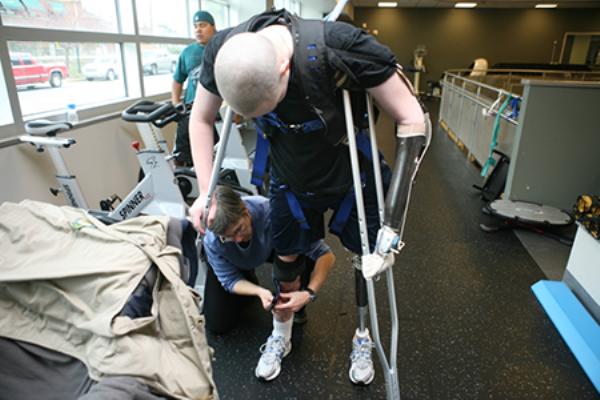The Army announced a plan Friday to close 10 of its 25 Warrior Transition Units (WTUs) that treat wounded, injured and ill soldiers with the goal of returning them to duty or easing their return to civilian life.
The WTUs scheduled for inactivation by August 2016 are at Fort Gordon, Ga.; Fort Knox, Ky.; Joint Base Langley-Eustis, Va.; Fort Leonard Wood, Mo.; Fort Sill, Okla.; Fort Polk, La.; Fort Wainwright, Alaska; Joint Base Elmendorf-Richardson, Alaska; Fort Meade, Md.; and Naval Medical Center, San Diego.
The service said the consolidation was made possible by the declining population of wounded, ill and injured troops after the wars in Iraq and Afghanistan.
Col. Chris Toner, commander of the Army Warrior Transition Command, said the automatic defense cuts under the sequestration process were not a factor in closing the WTUs.
Projected spending for the WTUs in 2015 was $791.5 million. Toner said the Army’s estimated the projected savings from the closures at about $350 million.
Despite the closures, the Army viewed wounded warrior treatment as an “enduring mission,” Toner said. “We are not walking away from warrior care.”
The 10 closures will affect a total of about 800 soldiers and 300 civilian workers. The Army will attempt to re-assign the workers while moving the 800 soldiers to other nearby units or possibly into community care.
The WTUs were set up following the 2007 scandals at the Walter Reed Army Medical Center on the treatment of wounded warriors. The Army spent more than $1.2 billion on 45 WTUs but the numbers have dwindled as the wars in Iraq and Afghanistan wound down. Last year, the service closed 14 WTUs to bring the total down to 25.
At the height of the wars in Iraq and Afghanistan, the WTUs were serving more than 12,700 troops. Toner said the current total was 3,654, and he expected a continuing population of about 3,000. The remaining number of WTUs could quickly be expanded to accommodate up to 8,000 troops in the event of another war, Toner said.
More than 69,500 troops have passed through the WTUs since 2007 and, until recently, about 45 percent of them returned to duty. Since last August, about 24 percent have returned to duty.
Currently, active duty soldiers must require six months of treatment before they are accepted into a WTU. National Guard and Reserve troops called up for active duty must require at least 30 days treatment.
Of the 3,654 troops now in WTUs, 1,753 were active duty (48 percent) and 1,901 were Guard or Reserve, Toner said. He added that about 1,700 of the 3,654 were being treated for various types of post-traumatic stress and behavioral problems.
Since the Walter Reed scandals that led to the firing of Army Secretary Francis Harvey that on active, the WTUs have frequently been the target of agency, inspector general and media reports of allegations of mistreatment and disrespectful behavior by staff.
On Friday, Toner pushed back against a report by NBC 5 in Texas that soldiers in WTUs nationwide filed more than 1,100 complaints about mistreatment from 2010-2014.
Toner said that all of the 1,137 complaints were to the Army’s own ombudsmen. He said 171 of the complaints involved allegations of unfair treatment and lack of respect. He said that 92 percent of the 171 cases were resolved by the leadership.
“I treat all these allegations seriously,” Toner said, adding that he had “zero tolerance” for soldiers being treated with a lack of respect and was “absolutely dedicated to eliminating that.”
-- Richard Sisk can be reached at Richard.Sisk@military.com
Don't Miss a Single Military.com Story
To read the full article and get exclusive benefits, sign up today.
It’s FREE
Why am I seeing this? Visit our FAQs





























